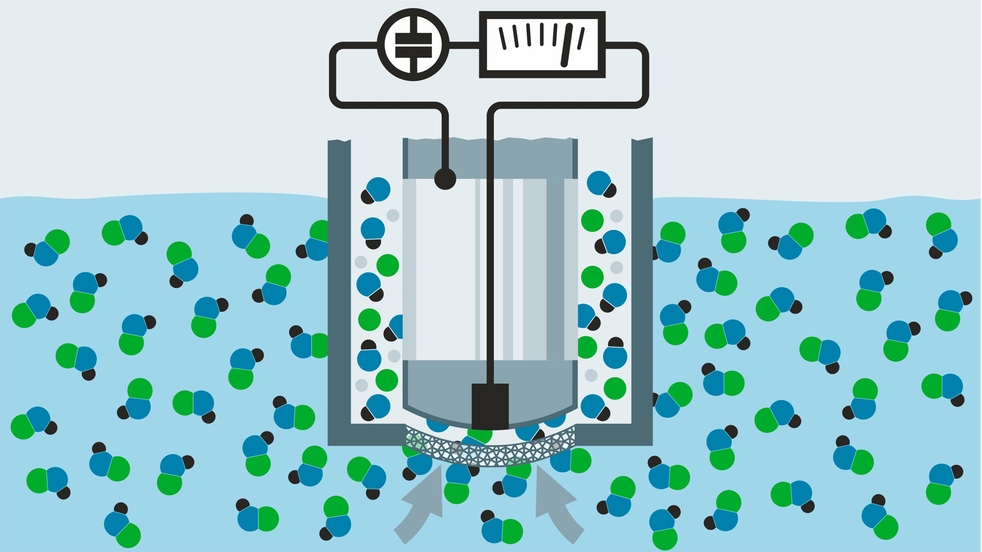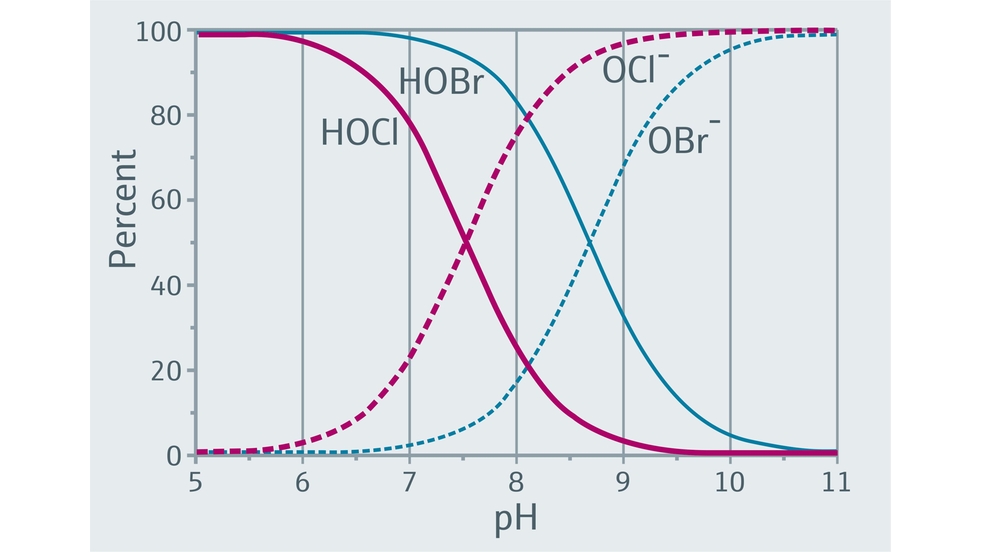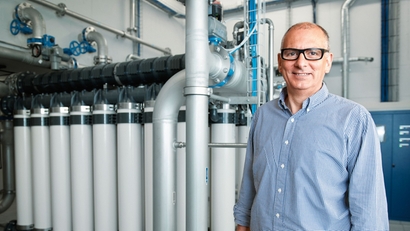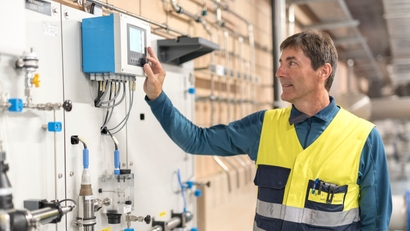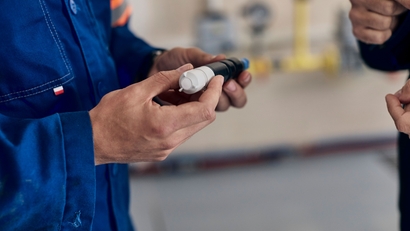Amperometric technology
Robust measurement without the need for reagents
Our disinfection sensors work according to the amperometric measuring principle. The chemical reaction of the disinfectant generates a very low current (nano ampere) in the sensor. This current is converted into the disinfectant concentration in milligram per liter by highly sensitive technology. Each disinfectant has characteristic properties that need to be considered during measurement. Many of these characteristics are stored in the Memosens plug-in heads of the sensors.
The chlorine content of a liquid can be determined using the amperometric measuring principle. This video shows what it is about and how this measuring principle works.
Disinfectants suitable for any application
Free chlorine
Due to its easy handling free chlorine is probably the most common disinfectant for water treatment. A decisive factor that must be considered when measuring free chlorine is the pH dependency. Free chlorine is the sum of HOCl and OCl- and depending on the pH mainly one of these species is in place:
HOCl is the main disinfecting component. It is active between pH 4 and pH 8. It is a gas dissolved in water and the Memosens CCS51E sensor selectively measures HOCl only.
From pH 8, mainly OCl- is present. It is a salt dissolved in water which has hardly any disinfecting effect, 100 times less than HOCl. Memosens CCS51E does not measure the OCl- salt.
Using a pH sensor like Memosens CPS31E for pH compensation allows for correct calculation of the free chlorine value.
Total chlorine
Total chlorine measurement determines the sum of various chlorine-based components such as free chlorine and bound chlorine. Bound chlorine is free chlorine that has reacted with amine compounds such as urea to chloramines. The Memosens CCS53E enables the measurement of total chlorine.
Chlorine dioxide
Has a strong disinfecting effect. Its reaction differs a little from free chlorine. It is more effective in dissolving biofilms and does not generate toxic byproducts such as trichloromethanes that might occur when using free chlorine. Chlorine dioxide has proven very successful in fighting legionella in cooling water.
The Memosens CCS50E Sensor enables the measurement of this parameter.
Free bromine
Seawater disinfection shows special chemical reactions because seawater contains a higher amount of bromide salts than normal water. Even when using free chlorine (HOCl) as disinfectant, it converts into free bromine (HOBr) as soon as bromide is present. As a consequence of this conversion, free bromine is the main disinfectant even if HOCl was initially applied. The Memosens CCS55E enables the measurement of this parameter
Measurement of free bromine is pH dependent but possible in a more alkaline range. pH compensation by using for example a CPS31E sensor allows for correct calculation of the free bromine value.
Ozone
Ozone is one of the strongest disinfectants. It is, however, only active at the point of dosing and has no depot effect. Nevertheless, ozone is very often used in many various applications due to its high disinfectant potential. Ozone must be generated in situ, thus monitoring of the ozone concentration is crucial to ensure the required conditions without any hazard for the environment. Here, the use of an ozone sensor helps to control the generation and the dosage.


